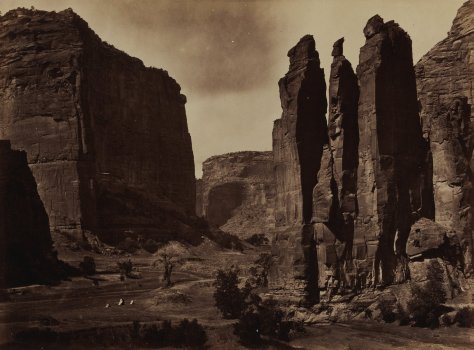Previously posted in a slightly different form on NJWV.




Since the National Museum of the American Indian has the best food of the Smithsonian institutions, it’s easy to find an excuse to visit it should I be museuming on The Mall. And once I’m inside it’s easy to stay and wander around. This time I checked out the Horace Poolaw show. Poolaw photographed his Oklahoma community for about five decades in the mid-20th century. While he operated a bit as a professional photographer doing weddings and funerals and other big events his photographs are all effectively insider images. They’re both of his community and for consumption by that community alone.
The community is one which most of us typically see only through the white gaze. The photos aren’t actively dealing with self-representation issues. They document and are an archive of people who society tends to ignore.
We rarely get to see Indians as regular people. This allows and encourages society to think of them as no longer existing in today’s world. A lot of this caused by the way that the concept of “authenticity” is linked with Indian regalia and appearances. Being Indian is either a very specific physical stereotype of dark skin and sharp features or it’s a costume which can be appropriated by anyone.
It’s weird and unexpected to see Indian clothing mixed with western clothing or settings. So seeing Indians dressed in regalia while driving or posing by modern cars just like any other mid-century American would pose is striking. The same goes with seeing soldiers wearing war bonnets with their military uniforms. Poolaw’s photos though are full of this kind of thing and we get used to seeing the mixing and matching. Even in what seems to be a straight photograph of two women in their regalia standing in front of a teepee we notice how the younger one has a modern haircut and makeup.
All too often museums present Indian culture* as a stagnant craft which exists outside of the influence of other cultures. In Poolaw’s photos we see how his culture is changing over the decades, especially with how opening up the Kiowa reservation to non-Kiowa settlers resulted in a ulture where everyone is blending their heritages together. There are different Indian Nations intermarrying. There’s the whole Indians serving in the US Armed Forces and celebrating homecomings and departures with traditional ceremonies. It’s a lot of fun to see and is a necessary reminder of how all of cultures are living and growing things.
*Or any non-white culture really.
Historically, the photos are also very interesting because they cover the time from the Indian Citizenship Act to the Indian Civil Rights Act. This is a time period in which Indian Nations gain both more autonomy for themselves to eventually practice their religions and traditions as well as more rights within the United States as US citizens with protected rights.
Poolaw specifically covers the development of Indian autonomy with his photos of the events which eventually developed into the what we now know of as American Indian Pow Wows. These photos work as a celebration of being Indian, archive of how the growth of acceptance of celebrating that by general American culture, and an uneasy critique of how the growing acceptance of powwow events has also lead them to be commodities.
His photos of the participants are wonderful relaxed photos of people who are at ease with the photographer and trust that their image won’t be exploited. His photos of the increased acceptance of these events are similarly fun to see as the people are increasingly able to operate in a mixed culture. His photos of the crowds and photographers who are watching the events though demonstrate his unease with how, as the culture is able to express itself more, it’s also increasingly accessible for consumption.*
*As someone who attends and photographs these events these photos also serve as a warning to me about how I should respect the space and the participants.
While it’s good that these cultural events no longer have to be practiced in a small private setting, the big events risk taking them from being for the participants and centering the audience instead. Poolaw, by being both an Indian and a photographer is able to straddle those worlds.




































